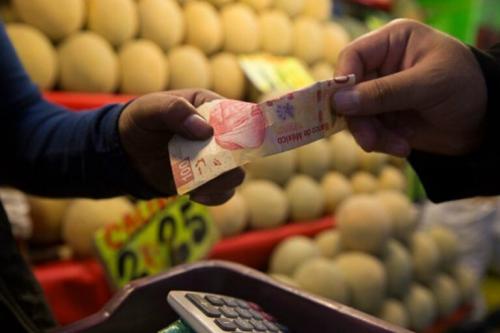The complexity of post-lockdown inflation
Policymakers face the dilemma to raise interest rates under the inflation targeting model, even if this means limiting investment, consumption and growth.The alternative is inflationary growth.
- Análisis

Since the resumption of economic activity after the confinements, there have been high inflation rates worldwide, although some monetary authorities have pointed out that it is transitory. The explanation for these sharp price increases is more complex if one considers the global dimension it has reached.
Inflation and prices have always been an obsession among economists, whose attempts to explain it consider employment, money supply, investment and savings, more recently deviations of output from potential. The integration of global value chains, the magnitude of international trade and productive and financial interdependence have shaped this post-confinement inflation. These are conditions that have developed over the last three decades.
Inflation is not generated solely domestically. The lack of synchronisation in production chains, where shortages in some branches, such as microchips, and overstocking in others, have created bottlenecks and led to longer lead times, delayed shipments and disrupted supply chains. The price of ocean freight has tripled, and this increase goes on to the cost of products.
Other factors are floods and extreme weather conditions caused by climate change, which increasingly wreak havoc on primary production by destroying crop fields and impeding the efficient transit of goods.
The excess liquidity in the markets, caused by the FED's, the ECB and the BoE monetary expansion, caused an increase in commodity prices, which is passed on to food and business inputs prices. The rise in the price of the primary energy sources has pushed the cost of transport and electricity generation, which has raised the cost of the household consumption basket and made production processes more expensive.
As these increases are distributed along the entire production chain, as long as there is a demand that recovers faster than supply, it will be a matter of time before these new increases go into consumer prices.
Disruptions in the supply of inputs have raised end prices and reduced industrial production of final goods, which has generated a delicate economic environment of slow growth with inflation. It contradicts the Monetary Fund's GDP growth projections in its October 2021 report [more]. Policymakers face the dilemma to raise interest rates under the inflation targeting model, even if this means limiting investment, consumption and growth. The alternative is inflationary growth.
Inflation is far from transitory. Businesses face a combination of supply chain challenges and higher energy, raw material, packaging, and shipping costs while becoming a significant concern for consumers around the world.
Central banks have taken a more aggressive stance. US Fed officials accepted that high inflation, which has risen to 5 per cent, will be long-lasting. The Bank of England is preparing a faster and more accelerated rate hike cycle. New Zealand, Norway, the Czech Republic, Mexico, Brazil, Chile, Peru, Colombia, Paraguay, Uruguay, Bolivia and Russia have already initiated interest rate hikes. These measures are contractionary, contrary to the much-desired recovery of output. Will the G7 countries follow these?
Num.34, Year 2021, November 19th
- Bertin Acosta: Faculty of Economics, UNAM, member of obela.org
- OBELA: Oscar Ugarteche (Coord), Armando Negrete, Carlos de León, Joselin García, Gabriela Ramírez, Luis Colin
Del mismo autor
- Interest rates global challenges 27/02/2022
- Los retos globales de la tasa de interés 27/02/2022
- The most expensive Christmas of the century... (so far) 20/01/2022
- La navidad más cara del siglo (hasta ahora) 20/01/2022
- La complejidad de la inflación pos-confinamiento 25/11/2021
- The complexity of post-lockdown inflation 25/11/2021
- Evergrande is not Lehman Brothers: beware the US budget extension 06/10/2021
- Evergrande no es Lehman Brothers 06/10/2021
- Private debt in Latin America 25/05/2021
- La deuda privada en América Latina 25/05/2021








